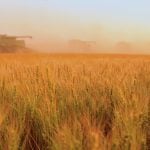
Features

Lifelong learning on the Misko farm
Prairie Farms: Knowledge and efficiency are key for this Manitoba farm operation

More bang for your fertilizer buck
Study provides more proof that pulse crops contribute to nitrogen use efficiency

What’s in the canola pipeline?
Product managers of some of the country’s leading seed companies share their insights

Quick Disease Reporter Tool a game-changer for farmers
Farmers and consultants are alerted about emerging disease issues

Study shows glyphosate, no-till systems and herbicide-tolerant crops benefit Prairie agriculture
Benefits include improved soil quality, less erosion, increased carbon sequestration, and reduced fuel consumption and greenhouse gas emissions

Nitrification and urease inhibitors
Before you buy, understand when and where these products will provide the greatest economic benefit to your farm

Rotations and the bottom line
Prairie researchers examine how different crop rotations affect net economic returns

New tool for Prairie farmers to help with fertility decisions
U of S researchers create a nutrient removal calculator specifically for producers in Western Canada

Survey shows farmers ready for biologicals
Companies like Corteva Agriscience are helping producers find a fit for natural products

Early results are in for variable-rate fertilizer economics
Researchers at Olds College are trying to determine the break-even point for producers


